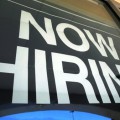 The early June report from the Department of Labor pointed to increased confidence among America’s employees and signs of continued hiring growth as jobless claims on unemployment insurance fell by 11,000 in a single week, down to 346,000 in total.
The early June report from the Department of Labor pointed to increased confidence among America’s employees and signs of continued hiring growth as jobless claims on unemployment insurance fell by 11,000 in a single week, down to 346,000 in total.
While unemployment claims have proved volatile in the past, a decrease in claims can indicate new employment and decreased reliance on public support.
Other signs confirm that the labor market is indeed continuing to improve. On the Department of Labor blog, the day after the report was released, the organization noted that “the increase in the civilian labor force of 420,000 (the highest increase since last October), together with higher consumer confidence, suggests that Americans are increasingly bullish about the nation’s economic future.”
In total, 178,000 new private-sector jobs were added in May, totaling 39 months of continued job growth in the United States and 7 million jobs created in a three-year span. In May, professional and business services picked up the most jobs, at more than 57,000, followed by the leisure and hospitality industry, at more than 43,000 jobs, and the retail trade industry, at around 28,000 jobs.
News from other organizations is also positive. As the Labor Department was analyzing the drop of jobless claims, the Federal Reserve Board released its June Beige Book, which reported that overall economic activity grew at a “modest to moderate” pace in the past month, saying that “A wide variety of business services expanded, and transportation traffic increased for producer, consumer, and trade goods.”
The Book also commented on the “moderate to strong” growth in residential real estate. Interestingly, the Federal Reserve also commented on the availability of skilled workers, noting that while hiring increased at a “measured pace” it was sometimes difficult to find qualified workers.
If companies want to hire qualified employees but are having trouble finding them, this indicates room for new employment in the market if workers can gain new skills. The Department of Labor blog offers several potential solutions, saying that, “education remains critical to long-term economic growth, as a skilled workforce increases productivity and becomes a magnet drawing jobs to our shores.” The post ends on a strong note, mentioning that high school graduation has reached a 35-year high across all racial groups in the United States.
[cf]skyword_tracking_tag[/cf]






No Comment